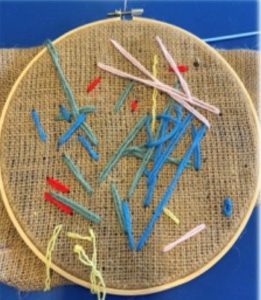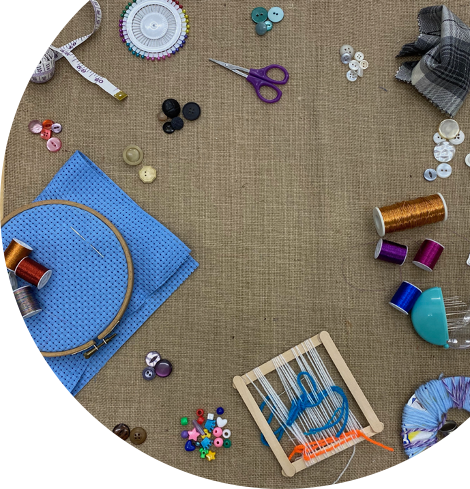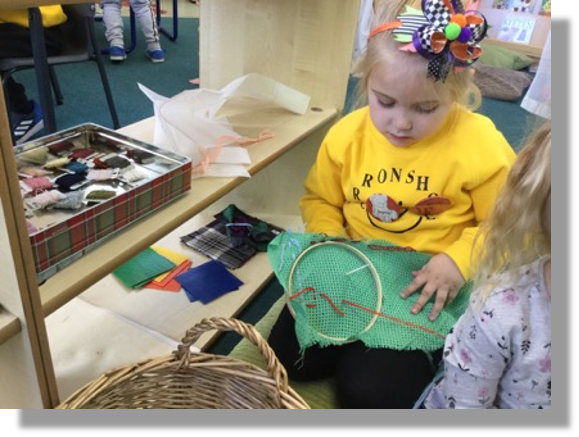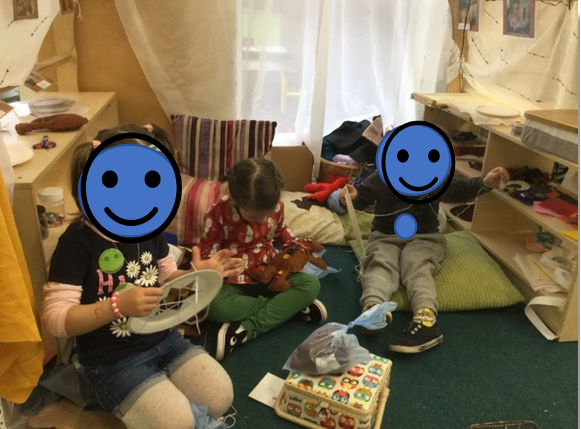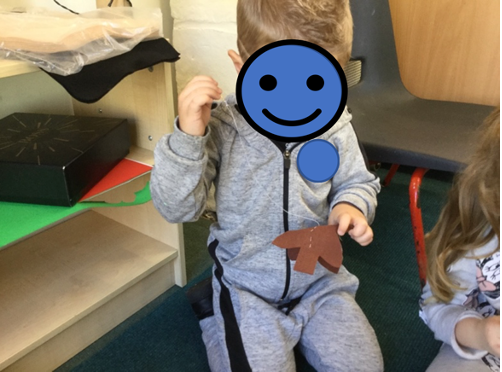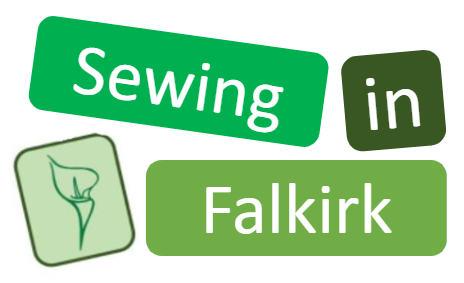 Sewing in Falkirk
Sewing in Falkirk
Click here to access the Sewing Presentation: Sew …Let’s Get Creative (this link is available to Falkirk staff and will require a Glow account to access) where you will find a wonderful sewing project which has been implemented into practice and continues to provide children with Froebel’s Occupation of sewing as a core resource on a day to day basis within an ELC setting. This also includes an example from practitioner enquiry Froebel project from studying Froebel in Childhood Practice Certificate course through the University of Edinburgh.
Falkirk Froebel Family Sewing Advisory Consultants
Each of our Falkirk Froebelian Sewing Advisory consultants have carried out a sewing Froebel project as part of their University of Edinburgh Froebel in Childhood Practice course and have sustained sewing within their Early Learning and Childcare setting.




Paula Arundel – Falkirk Froebel Family Network Sewing Advisory Consultant
————————————
Our Sewing Journey Stitch by Stitch
by Paula Arundel
Introduction
A practical project based on Froebelian principles, national guidance and pedagogical research – in order to promote curiosity, creativity and challenge through sewing, for young children.
Threading and beadwork can be seen as one of Froebel’s occupations based upon the point. Sewing is seen as one of Froebel’s line based occupations, which also includes threading, weaving, knitting, interlacing and embroidery.
My purpose in undertaking this project was to explore the impact such an occupation could have on fine motor skills, creativity, engagement and development of language. The project introduced threading, lacing and sewing as part of the continuous provision in the classroom.
Context
This project was implemented in a small Primary 1 class of 13 children aged 5-6 years old. The class configuration consisted of nine boys (69%) and four girls (31%). Within the classroom, the majority of the children consistently accessed block play and role play areas throughout the day, and tended to engage in either associative or cooperative play within same sex groupings. It has been observed that this play is habitual for the majority of the class, they very rarely adapt their play, or social groupings. It was identified that, as a whole, the children had poor pencil control and fine motor skills. Four children were identified as a focus group for the project, although resources and experiences were open and available to all children
The school catchment is described nationally as within the 20% most deprived areas in Scotland with 97% of intake within deciles 1-4 and 64% of intake from deciles 1 and 2 (SIMD, 2020).
A survey of parents/carers within ELC and Primary 1 was conducted. Of 91 surveys sent out, 37 were completed. The results concluded that 27% of parents/carers cannot hand sew. It was deemed important to be able to offer these experiences within school, equipping the children with this important skill, a skill for life, learning and work.
Methodology
The project began with a pre-assessment of four children’s fine motor skills and handwriting. It was concluded that the children lacked the hand strength and pressure required for handwriting. Letter formation was very poor, and in some cases, illegible. The children had immature pencil grip for their age, using wrist movements, rather than finger movements to draw and write. An area was set up during ‘Soft Start’ and was open and available to all children throughout this session. It was imperative to provide the children with developmentally appropriate resources, and to provide an element of personalisation and choice. Although in Scotland we strive to provide more child-initiated play opportunities, it is also important to have an element of intentional planning, to ensure that children continue to make progress in their learning, to guide them and provide ‘teachable moments.’
Threading activities were initially offered within the provocation. The children had the freedom to choose how to use these resources. Pipe cleaners, laces, foam shapes, cotton reels and beads were provided to allow children to further develop this skill. All children were able to thread large and small beads onto laces and pipe cleaners independently.
Pre-made foam lacing shapes, plastic lacing shapes and laces were provided in this provocation. It was noted that the children did not tend to follow the typical lacing ‘pattern’ expected when using these resources. In order to support the children in following a pattern, and being more thoughtful when lacing, cardboard lacing boards were provided, with the child’s first initial punched out. This allowed the children to follow the pattern of the holes, to create their initial.
Wooden embroidery hoops and hessian were introduced within the next provocation. Plastic needles, and wool were used to effectively support the children in threading the needle, and to sew using the larger holes within the hessian. The children were initially assisted in threading the needle, and then supported with the technique of sewing, using a running stitch, to enable them to develop this emerging skill.
Findings
Many benefits were observed throughout this project, including the improvement and development of children’s focus and concentration; co-operative play and language.
Focus and concentration
Throughout the project it was noted that the children were able to focus on these activities for a sustained period of time, up to 20/25 minutes in some cases. The class teacher had previously stated that during Soft Start, the children tended to flit between activities, not really able to settle, with most activities not often holding their attention for longer than 10 minutes. During this project, some children were keen to carry their play onto the next day, ensuring their resources were kept for them in a safe place. This demonstrates a sense of pride, a continuation of learning over multiple days, not simply an experience which ends with the school bell.
Co-operative Play
It was previously stated that, historically, the children were habitual in their play, playing with familiar resources, in consistent same sex groupings. However, it was observed that as the project progressed, and the children grew in confidence, they began to play co-operatively, within new pairings and groupings. The children helped each other to thread the needle, worked together on new creations and complemented each other’s creativity and ideas.
Language
It was observed that children’s language developed as they discussed their creations with each other and the educator. Some of this language detailed techniques used, symbolism, mathematical language, as well as general conversation. Some examples are provided below:
Technique
Child C: “Look, I did that to stop them falling off.”
Child M: “It’s like threading (while threading the needle).”
Symbolism
Child C: “I really like this because I like what I’m making”, “It looks like a bracelet”, “It looks like a skipping rope.”
Child E: “It’s like making waves and mountains.”
Child S: “It’s like putting ink into something.”
Mathematical language
Child C: “I found a circle.”
Child E: “I found a star.”
Child P: “Look, matching!”, “Sparkly purple!”, “It’s going to be the most beautiful bracelet of my entire life.”
Child R: “I’m trying to make a pattern of big ones and wee ones (stitches).”
Child S: “I am going all the way round the outside.”
Conclusion
In order for this project to be successful, and a worthwhile experience for the learners, Froebelian principles were incorporated throughout. The project recognised children as curious, independent, creative young learners, and sought to ensure they were given the appropriate tools and a nurturing environment to challenge themselves, take risks and express themselves and their ideas.
As a result, the children have not only developed a new skill, but have also increased their focus and concentration, expanded their use of language around sewing, symbolism and mathematical concepts, and fostered new and cooperative friendships with their peers.
Although this project is in its infancy, there is a clear plan to ensure that the project is sustainable and will survive the test of time. Opportunities for staff training, family learning and further development of skills have been identified, which will allow this project to gain momentum and become part of continuous provision throughout the setting.
It is important to note that projects of this kind will help to ensure that a skill such as sewing does not become a lost art. Allowing children to build upon their self-efficacy in hands-on experiences will allow them to become confident, resilient learners who take risks and express their ideas in creative ways.
——————————————————————————————————
View the video to see a sample of how some children get ‘Sew Creative’ with sewing. “Leafy Garland Making” youtu.be/p3OAvTsGwvU via @YouTube
Sew Creative
Embedding Froebelian Theories in Today’s Practice
by Jan Thomson
Sewing Corner
“Thread games have been around for centuries. Children everywhere are simply enchanted by a ball of yarn and what can be done with it…….. Games, finger knitting, and eventually knitting on needles and crochet can be taught. These Occupations prove that Froebel knew that children’s play turned into an adult’s work, trade or hobby.” Froebel Today (2014)
The central importance of play – rich first-hand experience, which extend children’s interest. As an initial provocation perforated boards, coloured laces with sewing pens were made available on the tough spot to create an interest in the children. It was observed that the children were immediately drawn to this new and exciting area using natural curiosity and inquisitiveness to develop an understanding of how to explore their creativity. The children were immediately building upon their skills in threading, colour recognition and sharing as they used the sewing pens and created patterns, and practised sewing in straight lines, across the board or making their own designs using lots of different colours.
An additional provocation was the introduction of a tailor’s dummy. The dummy was set up in the home corner with a variety of different materials and pegs for the children to design their own clothes. The new feature provoked lots of interest and the children were able to express themselves freely, individually or in a group through the design process.
“Froebelian Principles are incorporated through the continuous provision of Occupations. The particular principles being observed, through the form of a project to establish a sewing area, are;
Lines – the use of interlacing, intertwining weaving, thread games.
Points – how to string items, such as beads and buttons”
Keeping with Froebelian theory the use of real needles and scissors was introduced; which adds an element of risk. Risk assessments were completed following Falkirk Council’s Policy. Where fingers were being pricked by needles and pins, this was dealt with through the provision of thimbles and discussion of finger placements on the material during the sewing process. Discussions with the children on how to reduce risks are ongoing as new children begin to access this area.
The importance of developing community was crucial to the staff and parental involvement key – through a combination of Twitter, posting on the parent information wall and everyday conversations with parents/carers, requests were made for donations and any skills parents would like to share with the children to further enhance the sewing area.
To choose a sewing box for our sewing corner photos were taken of ones available in the local area. The children were given a choice of 5 boxes and continuing with the inclusivity each child was given a vote on which one they would like by putting a button in the box next to the pattern of their favourite one. Using technology to help them decide (iPad, swipe between photos) in both the morning session and the afternoon session, the buttons were added up to reveal the winner. This was then purchased and filled with all the sewing treasures; needles, threads, pins, scissors, thimbles, chalk and needle threaders for the children to explore and take ownership of.
Freedom with Guidance – help children to do challenging this for themselves.
Adults advise the children on safety (avoiding injury with the tools), encourage problem solving and are on hand to help with any problem’s children could not resolve on their own (tying thread in the needle). With a safe environment in place, the children soon took ownership of their learning and began sharing their knowledge by helping each other on how to untangle their threads, threading needles or which materials/wool/threads/buttons to use. From adults modelling good practice the children began to reinforce the safety guidelines by reminding each other of the rules of the sewing area with frequent calls of “needles are sharp”, “watch where your needle is when sewing”, demonstrating how to hold scissors properly and ensuring the children always replaced the scissors back into the box when they are finished with them allow children to be independent whilst using real tools.
Learning through self-activity and reflection – Continuity of provision
The sewing area soon became an embedded fixture with the nursey and become a key area for social interaction. While the children are all focused on sewing, there are lots of discussions about family, singing songs from the latest Disney movies and general everyday chats. Providing the children with a safe, secure environment in which to flourish.
Continuing to incorporate the Froebelian principle of Self-discipline, this area became a place for children to sit calmly and become engrossed in their chosen activity. Children who are struggling to control their emotions have used this area and found that they can sit quietly and immerse themselves in an activity while being supported by co-regulating through praise and approval, building connections and relationships. This allows them time to calm their emotions before continuing their play. One boy came into the sewing area sat on the seat and asked, “can I take my shoes off?” to which he was told “of course, if that makes you comfortable” after this whenever this boy comes to the sewing area, he always takes his shoes off before starting his sewing, showing he feels comfortable in this area. This also links with the Aims and values of our early learning centre allowing children to feel safe and happy while learning.
By observing the initial provocation and continuing to challenge the children the sewing area has become a well-used and focal part of the nursery. By being reflective and constantly reviewing the environment to make it better the staff were able to adapt and improve the area where and when needed.
Parents and carers were heavily involved in the development of this area through donations and before Covid were beginning to offer their time to demonstrate skills for the children. Continually consulting with the children on the progression of the area: choosing a sewing box, which items were needed, what experiences they would like. Children have found this area to be a safe, calming and relaxing place where they can become engaged in their activity or just socialise with other. This has had a great impact on the children’s mental health and will continue to offer a place where they can take five minutes to breath and self-regulate when feelings begin to overpower them.
Covid related changes to sewing area
-
All cushions and soft furnishings removed
-
attractive voile over sewing frame removed,
-
separate resources in two different boxes for different bubbles.
-
limited materials available
-
separate tubs of buttons, beads and sequins
-
needles pins and scissors sterilised daily and on changeover of children.
-
less children in the area at one time
-
wooden, wipeable chair
-
area sterilised frequently throughout the day
all the while trying to still make it an inviting and interesting area to access.
